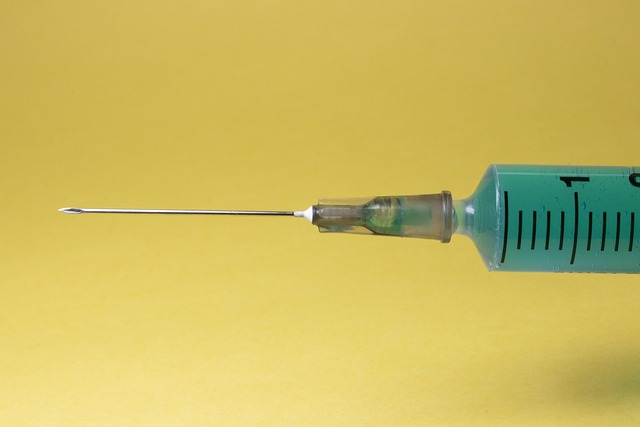A few weeks ago, I was accused of being biased and unscientific for acknowledging that all medications carry risks; that no medication was, in contrast to this commenter’s perception, ‘perfectly safe’. In her view, some medications were perfectly safe, even during pregnancy.
I went on to suggest that while no medication was perfectly safe, certainly some medications were safer than others and some medications were quite necessary for either maternal or fetal health, despite their potential risk for side effects. Sometimes those risks are minimal, and other times, they are not so minimal but necessary nevertheless. Medication use, whether during pregnancy or not, is never without risk. This commenter would have nothing of it. Certain medications were perfectly safe and I was biased and unscientific for suggesting otherwise.
The accusation was in response to the suggestion that meds should not be taken during pregnancy, posted alongside a press report about a recent study delineating the newly recognized side effects to male fetal development when mom takes of paracetamol, (acetaminophen – Tylenol in the US), during pregnancy. Up until recently, the safety of this over-the-counter drug was not contended (aside from the liver damage) and so generations of women took this medication believing it was perfectly safe. It wasn’t until researchers began investigating a broader range of outcome variables than is traditionally considered that these issues with fetal development became apparent. In other words, it wasn’t until we asked the right questions, until we knew what to look for, that we found the right answers.
When one studies maternal health long enough, a common pattern emerges. Drugs once considered perfectly safe are seemingly overnight recognized as not so safe. In reality, this recognition took years, sometimes decades before bubbling to the surface. Across the entirety of pharmacology we see this happen with great frequency, but in maternal health, the presumption of safety has always been spurious at best. More often than not, the research to determine safety is never conducted, and when it is, the studies suffer from serious methodological flaws, including small sample size and overly narrow range of outcome variables.
This happens across maternal health research. For example, a recent, very well-funded and highly touted study of blood pressure medications during pregnancy didn’t even ask whether or which medications to lower blood pressure during pregnancy were safe or safer. It simply asked whether high dose or low dose, aggressive or not so aggressive treatment of high blood pressure during pregnancy was more effective. Since all of the women studied were taking medications, the complications were similar. Since the women in the study were on multiple medications during pregnancy, tying any one complication to a specific medication was impossible. This allowed the researchers to avoid the side-effect/complication discussion altogether and avoid it they did. Beyond simply carrying the pregnancy to term, how did these medications affect overall maternal health, fetal health and infant development? We don’t know, these questions were not asked.
Conventional outcome measures for most maternal/fetal health research include only the most easily observable signs of maternal complications and fetal distress and development, generally within a short time frame of birth. Since those variables often show no apparent connection to the medication (because of design flaws in the research as in the blood pressure study above), the medication is deemed safe. But is it?
This brings us back to the absurd notion that any medication can be perfectly safe. When evaluating research on any topic we have to realize that how we frame the questions and what questions are asked determine what we can know about a given subject. With medical research this is not well understood, except perhaps by those who benefit from an incomplete knowledge set. In women’s health we see this pattern all the time, poorly designed studies fail to ask the right questions or, more often than not, there is no research at all. In both cases, the absence of evidence about a medication’s ill-effects is then transformed into evidence of an absence of any ill-effects e.g. that the medication is perfectly safe. And once the label of perfectly safe becomes entrenched, it is very difficult to disprove.
In the case of the paracetamol research, it wasn’t until the notion of endocrine disruption became more commonplace that researchers expanded their scope of side-effects. Kudos to the researchers for connecting paracetamol to male genital development, but if we’re honest with ourselves, not many of us, even if we are researchers, would have thought to ask that question. We couldn’t have considered questions connecting male or female genital development (notice, they did not concern themselves with female genital aberrations) to acetaminophen until recently, until the notion of endocrine disruption became more firmly established in medical research. When we don’t know what questions to ask (or tacitly ignore certain questions as in the blood pressure research) the answers returned are inadequate.
Returning to my biases about perfectly safe medications: I do have biases. Everyone does. I begin from the standpoint that nothing in life, but especially in medicine, is perfectly safe. This presumption is then colored by the understanding that most research is necessarily flawed, sometimes by economic interests, sometimes by poor design and sometimes just by the limitations of the knowledge base within which the investigators were operating. An absence of evidence is never evidence of absence. The lack of evidence means only that we have yet to ask the right questions. Does that mean medications are never warranted? Certainly not. It just means that I accept that all medications carry risks, many of which we have yet to understand. Those are my biases.
We Need Your Help
More people than ever are reading Hormones Matter, a testament to the need for independent voices in health and medicine. We are not funded and accept limited advertising. Unlike many health sites, we don’t force you to purchase a subscription. We believe health information should be open to all. If you read Hormones Matter, like it, please help support it. Contribute now.
Yes, I would like to support Hormones Matter.
Image credit: PickPik.
This article was published on Hormones Matter originally on July 1, 2015.
























